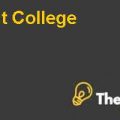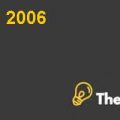Toyota's Innovative Share Issue 2015 Case Study Solution
Introduction
Toyota Company was initiated in 1937 in Japan, which is operating in automobile industry and known as Toyota Motor Corporation. Toyota is a market leader in the industry which is operating internationally. Moreover, international magazines, such as Forbes, have listed the company as the biggest automobile company in 2015.
Apart from its reputation, different risks and threats have been faced by the company. These threats include high competition and volatility in the international automobile market. In addition to this, the company was also facing risks of introducing, distributing and maintaining its new innovative products at competitive prices, information technology and digital risks were also faced by the company.
The company has been following two major rules due to which it is experiencing immediate succession. These rules included continuous improvements and respect of all of its stakeholders. As a result of continuous expansions, the company has improved its operations, faced many challenges which have made their employees more eager to make changes and innovation in order to get rewards and benefits.
The company has been facilitating its common shares holders with two dividends in a year, such an interimdividend and year-end dividend. As a result, national and international shareholders of the company are highly attracted. The company has announced new policy in order to increase its investments in the company. This new policy is the introduction of new shares type which is named as “Model AA shares”. These shares have created disputes among shareholders. As a result, management was tensed and requires some analysis.
Analysis
In order to make analysis for the company, following questions needed to be answered:
Question 1
Describe Toyota and its attitude toward innovation.
Toyota have always searched for continuous innovation. Moreover, this is the main reason of the steady growth of the company, not only growth in revenues, but also increase in its reputation and brand image. In addition, innovation is the base of company’s culture and every employee is enthusiastic to follow this culture as they are rewarded to bring innovation and growth to the company.
The company has never been satisfied in its current way of handling operations. Consequently, it is always finding ways to further improve itself. These findings help the company to make further innovation. These innovations are not limited to its product line and operations, but it is also innovating its operational, financing and investing strategies which helps the company to manage itself.
Question 2
Analyze Toyota's risk and capital structure based on its financial statements.
The capital structure of the company defines that company’s major financing had been taken place through debt as company is financing an average of 63.4% of its business through debt and 36.5% through its equity. It determines that company is highly risky and interest is the major expense of the company.
In order to determine the risk of the company, liquidity ratios have been calculated. Leverage ratios includes current ratio, quick ratio, debt to equity and debt to assets. Current ratio has determined that company holds enough current assets that would help the company to pay off its liabilities which is due within a year. Quick ratio has explained that inventory played an important part in the company’s current assets that by subtracting inventory, company has become less efficient to pay off its current assets. Debt to equity ratio has determined that over the span of 5 years, company’s debt over equity has been fluctuating. Moreover, it also explained that company has taken higher debt than its equity investment, which has increased the risk of the company. Lastly, the cash ratio has determined that the company is holding much lesser cash compared to its current assets, which would result in non-payment of its current liabilities.
Question 3
Describe "Model AA" shares. Why is there a five-year-lock-up-period? Why are these pre-determined dividends?
Model AA class shares has been introduced first by Toyota Company on the name of its first passenger car which is Model AA. The characteristics of these shares includes that these would be unlisted and would be sold only in Japan. Therefore, if there would be any foreign investor, purchases have to be made through intermediary or agents. In addition, these shares are for medium or long term investment therefore, these would be locked up for 5 years. However, after 5 years, these shares could be convertible to ordinary shares. Moreover, as the dividend on common shares have been paid two times in a year and their amounts could not be predicated. On the other hand, the dividends for theses hares have been determined before.
Toyota’s Innovative Share Issue 2015 Harvard Case Solution & Analysis
The five year lock up period strategy have been designed by the company as it would help the company to predict its upcoming equity. Moreover, it would facilitate the company’s management to make balance between its capital structures........................
This is just a sample partial work. Please place the order on the website to get your own originally done case solution.













